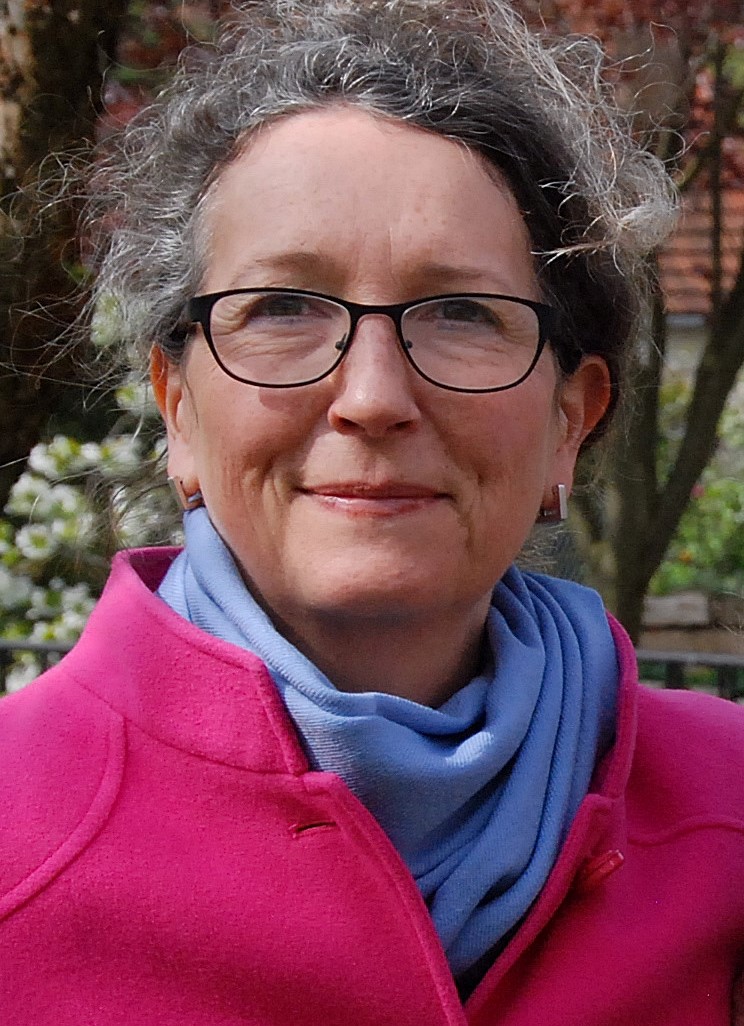Ursula Lehmkuhl is the chair of international history at Trier University. She lives in Trier and has been a member since 1999.

Christiane Juergens
Website: www.international-history.uni-trier.de
Alma maters: PhD (modern history), Ruhr-Universität Bochum, 1990; Habilitation (political science), Ruhr-Universität Bochum, 1997
Fields of interest: international, diplomatic, transatlantic, colonial, migration, environment
Describe your career path. What led you to where you are today?
While a student, I had extraordinary teachers in both of my fields: history and romance languages. They were excellent mentors who helped me find my way into academia. As a first-generation college student, this was especially important. In addition, my interest in North America, a curiosity for sociological theories, and diverse research perspectives shaped my path. Interdisciplinarity, specifically a combination of the social sciences and cultural studies, has always characterized my scholarly work and has led me to where I am today.
What do you like the most about where you live and work?
I like very much working at a place where other people spend their holidays. Trier is the oldest German city and the Mosel region is a beautiful place to live. The university’s history department is one of Germany’s most exciting departments that excels in all historical eras. The new growing University of Luxembourg is close by and Paris with its many excellent universities is practically a neighbor; both offer many opportunities for collaboration and exchange.
What projects are you currently working on?
I am directing a German-Canadian Graduate Center focused on diversity (irtg-diversity.com). I am interested in how conceptual and cultural “translation,” as a social practice, shapes social settings characterized by social, ethnic, and cultural plurality. The translation of cultural difference creates spaces of conviviality and helps to come to terms with alterity.
A second project deals with 19th-century German immigrants in the United States. I am using German immigrant letters from the “Deutsche Auswandererbriefsammlung” (German immigrant letter collection, www.auswandererbriefe.de) to reconstruct patterns of mobility on both sides of the Atlantic. I am using GIS visualizations to understand the geographical mobility of German immigrants in the United States as well as that of their families and friends who stayed home. In addition, network analysis and visualization tools are allowing me to analyze the impact of migration on their social mobility. In order to use these methods and tools, the immigrant letters need to be digitized.
And this is the third field I am currently involved in: the development of digital research infrastructures for historically oriented scholarship, the promotion of data literacy and digital source criticism in historical research and teaching, and the establishment of a data culture within our profession. I am collaborating as a co-spokesperson with the 4memory consortium (4memory.de) of the German National Research Data Infrastructure initiative (NFDI, nfdi.de). German historians are still very much dependent on using analog historical material. Only a fraction of our archival holdings has been digitized so far. Tackling the analog-digital interface is a major task ahead of us.
Have your interests evolved since graduation? If so, how?
My research interests evolved according to developments in the discipline but also in response to my personal scholarly pursuits. I describe my own development as a path with many different intersections: 19th- and 20th-century international history are the main road. Along the way, my research intersected with the fields of environmental, colonial, immigration, and digital history, as well as the history of diversity and cultural pluralism.
What’s the most fascinating thing you’ve ever found at the archives or while doing research?
The most fascinating thing I found at the archives was a document outlining US reconstruction policy in Japan following World War II. The document showed that the US turned to a relic of the British Empire—the Sterling Area—to secure Japanese economic reintegration into South and Southeast Asia. The fascinating thing about this is that the US, which had won independence from the British Empire and had promoted decolonization, was now adopting British imperial institutions to foster its own hegemonic position. This discovery was the starting point of my book Pax Anglo-Americana.
Is there an article, book, movie, blog etc. that you could recommend to fellow AHA members?
I would like to recommend an article published by Michael Werner and Bénédicte Zimmermann in History and Theory in 2006 entitled: “Beyond Comparison. Histoire Croisée and the Challenge of Reflexivity.” This article helped me methodologically to situate my research in the field “area history” and “settler colonial studies.”
What do you value most about the history discipline?
The opportunities and scholarly space it offers for asking deep questions to solve historical problems that in general emerge in a very individualistic way, depending on one’s own background, research networks, and archival findings. Curiosity and serendipity and not rigid theoretical frameworks are key to the development of new research perspectives.
Why is membership in the AHA important to you?
Being a member of the AHA keeps me connected with the best in the field, keeps me abreast of new historical information and up-to-date with the progression of the field, and provides me with resources that help further my career.
Why is membership in the AHA important to you?
The AHA opens up a broad network of scholars while also setting standards in teaching history and supporting early career scholars. The AHR is a mover for historical research worldwide.
AHA members are involved in all fields of history, with wide-ranging specializations, interests, and areas of employment. To recognize our talented and eclectic membership, Perspectives Daily features a regular AHA Member Spotlight series.
Tags: Perspectives Daily Member Spotlight Global History Environmental History Migration/Immigration/Diaspora

This work is licensed under a Creative Commons Attribution-NonCommercial-NoDerivatives 4.0 International License. Attribution must provide author name, article title, Perspectives on History, date of publication, and a link to this page. This license applies only to the article, not to text or images used here by permission.
The American Historical Association welcomes comments in the discussion area below, at AHA Communities, and in letters to the editor. Please read our commenting and letters policy before submitting.
Comment
Please read our commenting and letters policy before submitting.







